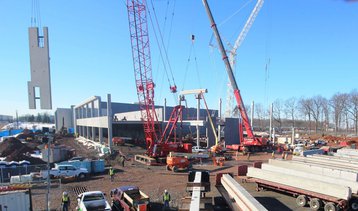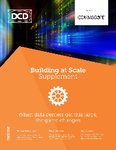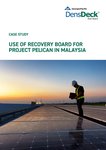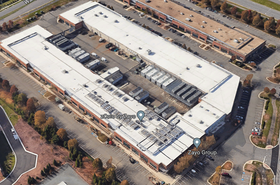The challenges that have the most significant effect on the building shell can be summarized as rapid deployment and supply chain management. The increasing demand for data, partially the result of the Covid-19 pandemic, has only intensified these challenges, and the construction methods and timelines of 10 or even five years ago are no longer acceptable for the hyper-fast models that represent today’s data center construction industry. With the near exponential demand for compute power, the resulting pressure on supply chain, procurement cycles, and rapid deployment tactics is increased.
Added to these complex challenges is the nature of the IT and MEP equipment housed within the data center shell. Usually well-planned and complicated, this equipment affects the nature and design of the building shell, yet too often, the design of the building shell doesn’t keep pace with the evolving complexity of the equipment inside. Ideally, the building shell should optimize the owner’s opportunity to use the broadest array of equipment most efficiently. But as densification of equipment loads has steadily increased from 150 lb per sq ft (PSF) towards 400 PSF, demands and availability of supporting members have been strained. To help alleviate that central challenge, it is critical to identify early in the design process the building’s kit of parts that has the greatest capacity for loads and creation of clear space in the data halls.
Every structural column costs
The economic value of a single incursion in the data hall space by a structural column can have major economic disadvantages over the life of the building. However, development of all-precast concrete data center frames can significantly improve the long-span characteristics and load-carrying capacity in the data halls. An all-precast concrete structure is by its very nature a single intensity activity that does not have the fragmentation associated with a hybrid system (e.g., steel frame + precast or concrete tilt-up walls). As a result, design of an all-precast concrete structure can provide longer spans, carry heavier loads, and progress with more speed than a design using alternate building systems.
An all-precast concrete shell consists of components that are manufactured in a controlled environment with materials dug out of the earth. Data center shell builders should maintain inventory of raw materials in their manufacturing facilities; so all that is needed to immediately proceed with production are shop drawings. Precast builders don’t place mill orders for bar joists or wide flange shapes. The only limiting factor for all-precast concrete design tends to be meaningful, early engagement with the design team and to a lesser extent, the point in time a particular project is produced in our manufacturing facilities.
By utilizing an all-precast concrete design for the building shell, speed of construction is significantly improved for a variety of reasons, including turnover points at various areas in the building, points at which the roof system can be installed and the general erection rate of the precast kit of parts. Because precast concrete is manufactured offsite in a controlled environment, the building shell is 100 percent prefabricated. We aim to reduce waste CO2 in our kit of parts and are actively testing options for our manufacturing process. This has come about through recent requests from cloud providers and REITs.
Components are shipped to the jobsite for “just in time” erection, with numerous opportunities to incorporate prefabricated components into the kit of parts as pieces arrive each week. In a two-story hyperscale, all-precast concrete structure, the precast assembly crew will consist of approximately 25 members, not several hundred. Obviously, this has positive implications for safety on the jobsite. Additionally, a key safety benefit of an all-precast building shell is precast concrete’s inherent durability, fire resistance, and ability to withstand seismic activity, floods, and other weather events.
Early engagement in the building shell design process is key to an all-precast concrete design. Much like the car on the front row and in pole position in the Indy 500, components for an all-precast concrete building shell can be manufactured as soon as the precast producer receives the green flag. Onsite assembly of the precast kit-of-parts can be completed faster, significantly reducing construction costs and making the structure available earlier to follow-on trades. Trigger points and off-ramps in a regular cadence of cost projections are easily accomplished and will lead to certainty of outcome for an all-precast concrete building shell solution that overcomes the challenges of supply chain issues and rapid deployments.






